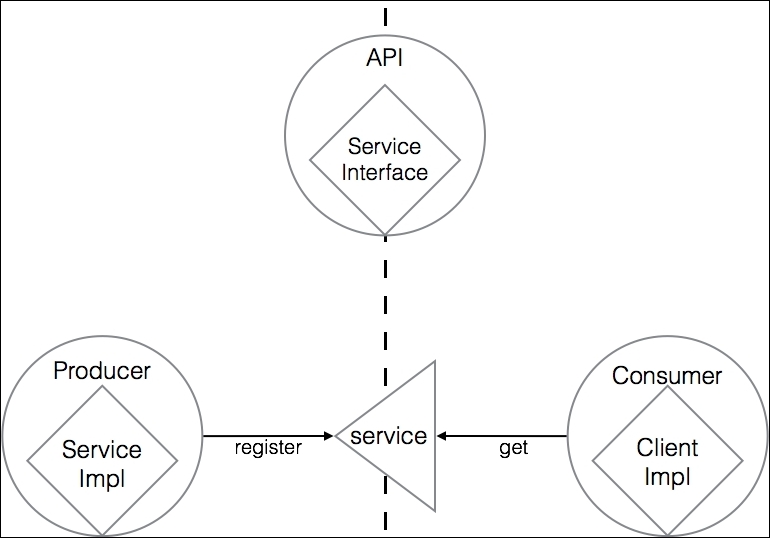In an Eclipse or OSGi runtime, each individual bundle is its own separate module, which has explicit dependencies on library code via Import-Package, Require-Bundle, or Require-Capability. These express static relationships and provide a way of configuring the bundle's classpath.
However, this presents a problem. If services are independent, how can they use contributions provided by other bundles? In Eclipse's case, the Extension Registry provides a means for code to look up providers. In a standalone OSGi environment, OSGi services provide a similar mechanism.
A service is an instance of a class that implements a service interface. When a service is created, it is registered with the services framework under one (or more) interfaces, along with a set of properties. Consumers can then get the service by asking the framework for implementers of that specific interface.
Note
Services can also be registered under an abstract class, but this is not recommended. Providing a service interface exposed as an abstract class can lead to unnecessary coupling of client to implementation.

This separation allows the consumer and producer to depend on a common API bundle, but otherwise be completely disconnected from one another. This allows both the consumer and producer to be mocked out or exchanged with different implementations in the future.



